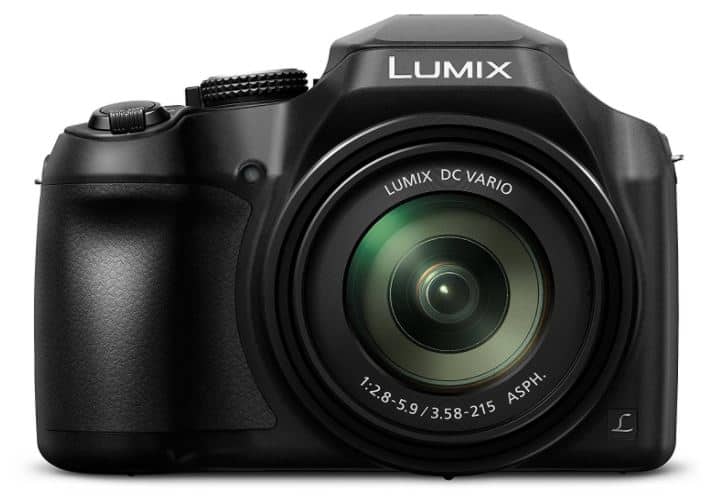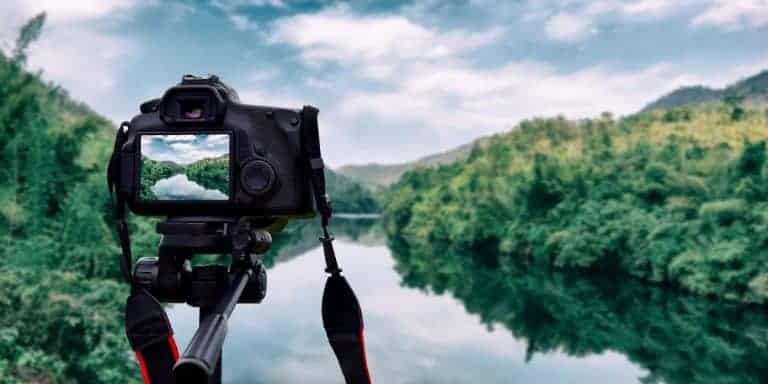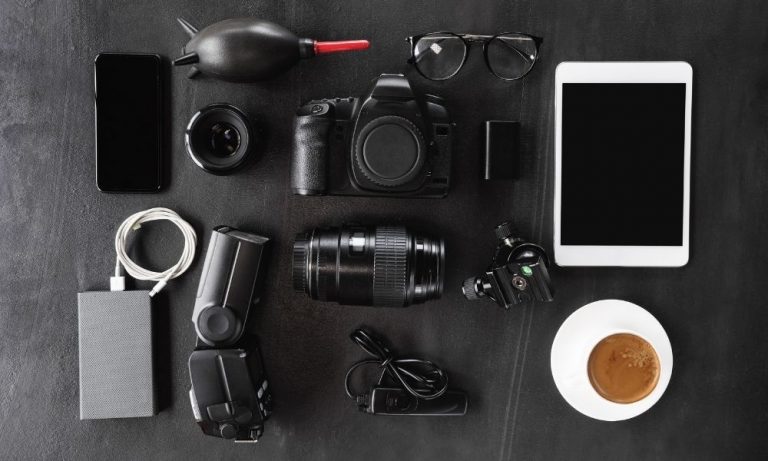What Type of Camera is Best for Blogging?
Are you looking for the best camera for blogging, but not sure where to start?
It can be overwhelming when searching for a new blog camera because there are so many options.
Do you know and understand what type of camera is best for blogging and meets your blogging needs?
We’ll talk about the different types of cameras on the market today with all the setting options and features available.
When you understand the important things to look for in a blogging camera, it will be much easier to choose the one that works best for your blogging goals.
Some of the links on this site are affiliate links, meaning if you book or buy something through one of these links, we may earn a small commission – at no extra cost to you! Read the full Disclosure Policy.
WHAT SHOULD I LOOK FOR IN A BLOGGING CAMERA?
Camera basics we’ll cover:
- Types of camera
- Pros and cons for each type of camera
- Specifications and features for each type of camera
- Our top picks for each type of camera
1. KNOW THE DIFFERENT TYPES OF CAMERAS
Point and Shoot Cameras
A point and shoot camera is compact and easy to use. They are ideal for people who want to just ‘point and shoot’, which essentially means keeping the camera on the automatic setting.
If you don’t need the most high-quality photos for your blogging, then this small and simple camera type is probably a good option.
PROS
- Compact
- Lightweight
- Inexpensive
- Easy to operate
CONS
- Reduced image quality
- Fixed lens
- Limited manual controls
OUR TOP TWO POINT AND SHOOT CAMERAS FOR BLOGGING
| Camera | Type | Weight/Size | Megapixels | ISO | FPS | Price |
| Panasonic Lumix DMC-FZ80 | Point and Shoot | 1.36 lbs – 4.7 x 5.1 x 3.7 inches | 18 | 80-6400 | 30 | Check Price |
| Canon PowerShot G7 X Mark II | Point and Shoot | 1.5 lbs – 1.65 x 2.4 x 4.15 in | 20.1 | 125-12800 | 8 | Check Price |
DSLR Cameras
A DSLR has two separate parts: the body and the lens. These two parts can be detached from each other and replaced with a different version of that part. But you do need both parts to take a photo.
The workings of a DSLR can be complicated, but to put it simply, the camera uses a mirror that’s inside the camera body to capture an image.
Bloggers choose to use a DSLR camera because it gives them ultimate control over how a photo is taken, and results in a high-quality picture.
PROS
- Image Quality
- Adaptability
- Speed
- Manual Controls
- Reatins It’s Value
- Depth of Field
CONS
- Price
- Size and Weight
- Maintenance
- Complexity
OUR TOP THREE DSLR CAMERAS FOR BLOGGING
| Camera | Type | Weight/Size | Megapixels | ISO | FPS | Price |
| Fujifilm X-T20 | DSLR | 3.5 lbs – 4.66 x 3.26 x 1.63 | 24 | 200-12800 | 8 | Check Price |
| Canon EOS Rebel T6 | DSLR | 8.7 lbs – 17.5 x 13.8 x 7.8 | 24 | 100-25600 | 6 | Check Price |
| Canon EOS 70D | DSLR | 1.7 lbs – 5.5 x 4.1 x 3.1 | 20.2 | 100-12800 | 7 | Check Price |
Mirrorless Cameras
A mirrorless camera is similar to a DSLR except it doesn’t use a mirror to take images (perfectly named camera then, huh).
Bloggers like mirrorless cameras because they have pretty much the same features of a DSLR, but are more lightweight and compact.
Mirrorless cameras have two parts: the body and lens. There are interchangeable lenses to use with a mirrorless camera, but not as many options as you have with a DSLR camera.
PROS
- Compact and lightweight
- Digital viewfinder (EVF)
- Top-notch autofocus system
CONS:
- Reduced battery life
- Sensor exposure when changing lenses
- Start up lag
- Electronic viewfinder limitations
OUR THREE PICKS FOR MIRRORLESS CAMERAS FOR BLOGGING
| Camera | Type | Weight/Size | Megapixels | ISO | FPS | Price |
| Sony Alpha A7 III | Mirrorless | 1.32 lbs – 5 x 3.78 x 2.36 | 24 | 100-25600 | 5 | Check Price |
| Sony a6000 | Mirrorless | 0.76 lbs – 4.72 x 2.64 x 1.77 | 24 | 100-25600 | 11 | Check Price |
| Fujifilm X-A5 | Mirrorless | 12.7 oz – 4.6 x 2.7 x 1.6 | 24.2 | 200 to 12800 | 6 | Check Price |
Smartphone Cameras
The cameras in smartphones have come a long way and they are amazing!
But smartphone cameras have limitations, especially when it comes to image quality:
- Computational zoom instead of true optical zoom which covers a wide range without pixelating the image
- Reduced speed and manual control
- Limited manual controls: ISO, shutter speed, and other functions
- Shorter battery life
Our Pick of the 10 Best Cameras for Blogging
2. UNDERSTAND THE FUNCTION OF EVERY CAMERA SETTING
Manual Mode
Bloggers who want complete control over their image quality must find a camera with manual mode. Using manual mode allows you to adjust the settings of aperture, shutter speed, and ISO to create a picture-perfect end result.
However, if manual mode sounds too advanced and complicated, look for a camera that has automatic mode.
If you’re up to the challenge to learning manual mode, you can start using the automatic feature and slowly switch as your skills improve.
Sensor Size
Sensor size matters! The camera sensor determines how much light is used to create an image. A bigger sensor collects more information than a smaller one and produces better images. This is why many photographers continue to use the big and bulky DSLR cameras.
Megapixels
Megapixels refers to the resolution of a camera. The greater the number megapixels, the better quality the image will be. BUT remember the sensor size also matters here. A large sensor camera with a small megapixel number will take higher quality photos than a camera with a small sensor and a high megapixel number.
ISO
ISO is the sensitivity of a camera’s sensor to light. When you increase the sensor sensitivity (ISO), you can take photos in darker conditions without a flash. A good ISO range for high quality photos is around 200 to at least 1600 or higher.
Raw
Raw rules when it comes to editing photos. If you want to use editing software light Adobe Lightroom, look for a camera that captures raw photos, and not just the JPEG format.
WI-FI Connectivity
If you’re a blogger who needs to connect to the internet to share photos from your camera to your smartphone or computer, then the Wi-Fi connectivity function will be important for you.
Frames Per Second
FPS is how many photos the camera can take per second. For most bloggers, 5 frames per second is sufficient. If you’ll be taking photos where there is fast-moving action like sports, wildlife or even kids, you may need to increase the FPS.
Optical Zoom vs Digital Zoom
Optical zoom means the camera is using real optics to bend a focus light to make faraway objects appear closer. Whereas, digital zoom is just cropping an image to make it appear closer. An optical zoom is a true zoom lens that will produce higher-quality images.
Our Pick of the 10 Best Budget Vlogging Cameras
3. DO YOU NEED A CAMERA WITH VIDEO FUNCTIONALITY?
If you’re a blogger or vlogger who needs a camera that will also produce quality videos, then you’ll need to look for these features:
- At least Full HD (1080p) or 4K Ultra HD resolution
- Fully articulating or tilting monitor to help frame your face
- In-body image stabilization to ensure smooth video
- External microphone support
- Built-in WiFi for sharing your vlogs on the move
4. IS CAMERA SIZE AND WEIGHT IMPORTANT TO YOU?
Pay attention to the size and weight of the camera. It’s often believed that the better cameras are heavy and bulky.
If your blogging needs don’t require carrying the camera around, then this might not be an issue. But if you’re traveling, hiking or vlogging, a lightweight and compact camera might be best.
5. MAKE SURE THE PRICE FITS YOUR BUDGET
You can take terrific photos without purchasing the most expensive equipment. Determine your budget and find the best camera that meets your needs in that price range.
The key to great photography is not buying the high end camera gear, but understanding the functionality of the camera you have!
Our Pick of 10 Awesome Compact Cameras
Tips to Improve Your Photography
In order to find out what type of photography you truly love, you must capture images of many things: people, landscape, architecture, food, dogs, cats, birds, rivers, waterfalls….
Set a goal to find those things you LOVE to PHOTOGRAPH!
The best way to learn photography and improve your skills – shoot, shoot and shoot some more!
You can read and watch tutorials, but until you put the information you have accumulated into motion, you aren’t going to learn a thing!
- Photography Composition Ideas Video Series
- Lightroom Tips Video Series
- Online Beginner Photography Courses
- 52 Week Photography Challenge List
- Digital Photography School Courses & EBooks
Photography should be FUN! If you are photographing the things you LOVE, it will be!














